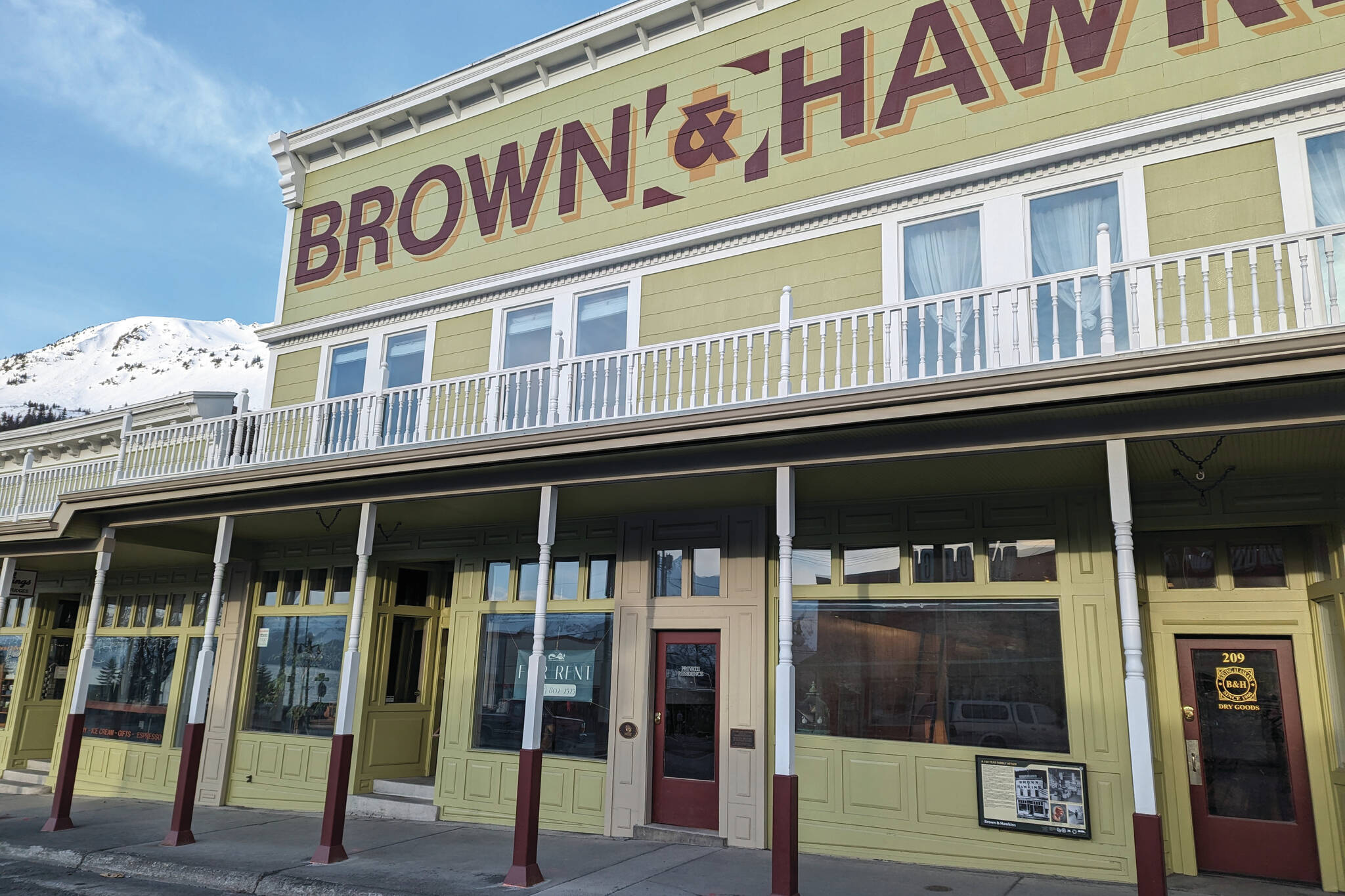Visitors to the Library of Congress will be able to take a virtual tour of the historic Brown and Hawkins store buildings located in Seward, and explore all parts of the properties, local historian Doug Capra explained.
The buildings, which are located at 207-209 on 4th Avenue about two blocks from the shore of Resurrection Bay, recently were included in the Historic American Buildings Survey in the Library of Congress with technical and administrative assistance from the National Park Service. The survey is a component of the congressional Historic Sites Act of 1935. The site was listed on National Register of Historic Places in 1988.
The survey documents include measured drawings, digital photographs of every component of the building and an extensive building and structural history that will be housed in the Library of Congress in Washington, D.C.
The senior historical architect and project manager is Grant Crosby, who works for the National Park Service in Anchorage.
Owner Iris Darling said she has struggled to get a sustainable fire suppression system in the buildings. The current system has been in the building since 1931 but it has been difficult to survey the building due to the age of the structure. She noted that in 1940 the community of Seward did experience a fire that took out half of the town.
When she started to reach out for funding assistance, she was connected to Crosby who told her he thought he could help.
“It was his idea to put these buildings on the historic survey,” she said.
She said Seward’s Fourth Avenue Theatre also had a HABS survey conducted on that site before the buildings were torn down.
Crosby confirmed in a phone interview that the entire project started with the intention of installing an adequate fire system due to the level of precise detail used to survey the buildings. For example, the architectural drawings are within 1/8th of an inch of accuracy of the building structure, Crosby said. Additional materials used in the survey are two digital scanners.
Contract crew for the survey was AECOM based out of Portland, Oregon. National Park Service crew Patience Stuart, project manager and senior architectural historian; Autumn Buckridge architectural historian; and John Wachtel, historical architect, provided the compositional components. Fred Hirschmann from Glacier View, Alaska, provided photography.
“The surveyors measured every inch and dimension of that building. It’s very impressive,” Darling said.
The buildings were constructed in Seward between 1904 and 1909 and housed Seward’s first commercial businesses and the Bank of Seward, which preceded the National Bank of Alaska, according to documentation provided by Darling.
The buildings have been in the Hawkins family since they were constructed, and are now operating under the fourth generation of the family.
Darling’s husband, Hugh Darling, now deceased, was a descendant of the Hawkins family on his mother’s side. Though not originally from Seward, the Darlings moved to Alaska in 1989 and bought the buildings from Hugh’s brother.
“My husband’s grandfather, Hawkins, was one of the founding fathers of the town. He came up in the Gold Rush to stake claims in Nome and that’s where he met Tom Brown and they built a store up there but when the gold started slowing down, they decided to move to Valdez. Brown was a banker from New York and Hawkins was a merchant. Most of the folks in Valdez were just waiting for the steamship to come in so they could go home but Brown and Hawkins decided to go around the corner to Seward,” Darling said.
In a press release to the Homer News, Darling provided some additional information about how Brown and Hawkins contributed to Seward.
“They purchased a barge known as the Bertha and took the ship up to the mud flats of what is now known as Anchorage. There, they sold provisions to settlers in the territory.
“Bertha was often referred to as ‘the Anchorage’ where miners and trappers shopped for provisions. When the town of Anchorage was formed, Brown and Hawkins opened one of the first stores and the first bank at 4th and D street. These closed in the late 1920s.”
The first of the two business buildings were built and the third was purchased, she said. The historic site is a primary feature of downtown Seward.
According to Darling, two of the three commercial spaces are available for lease for long-term tenants. The third is currently Sweet Darlings Candies and the second floor includes long-term and nightly rentals.
“I’m just trying to get some publicity for Seward and help the community appreciate their history a little more. The Brown and Hawkins buildings have been there since day one. We were there for the earthquake; we were there for everything for the people of Seward,” Darling said.
Darling said both she and her husband were active in the community. He served as vice mayor at one point and they served on the city council.


